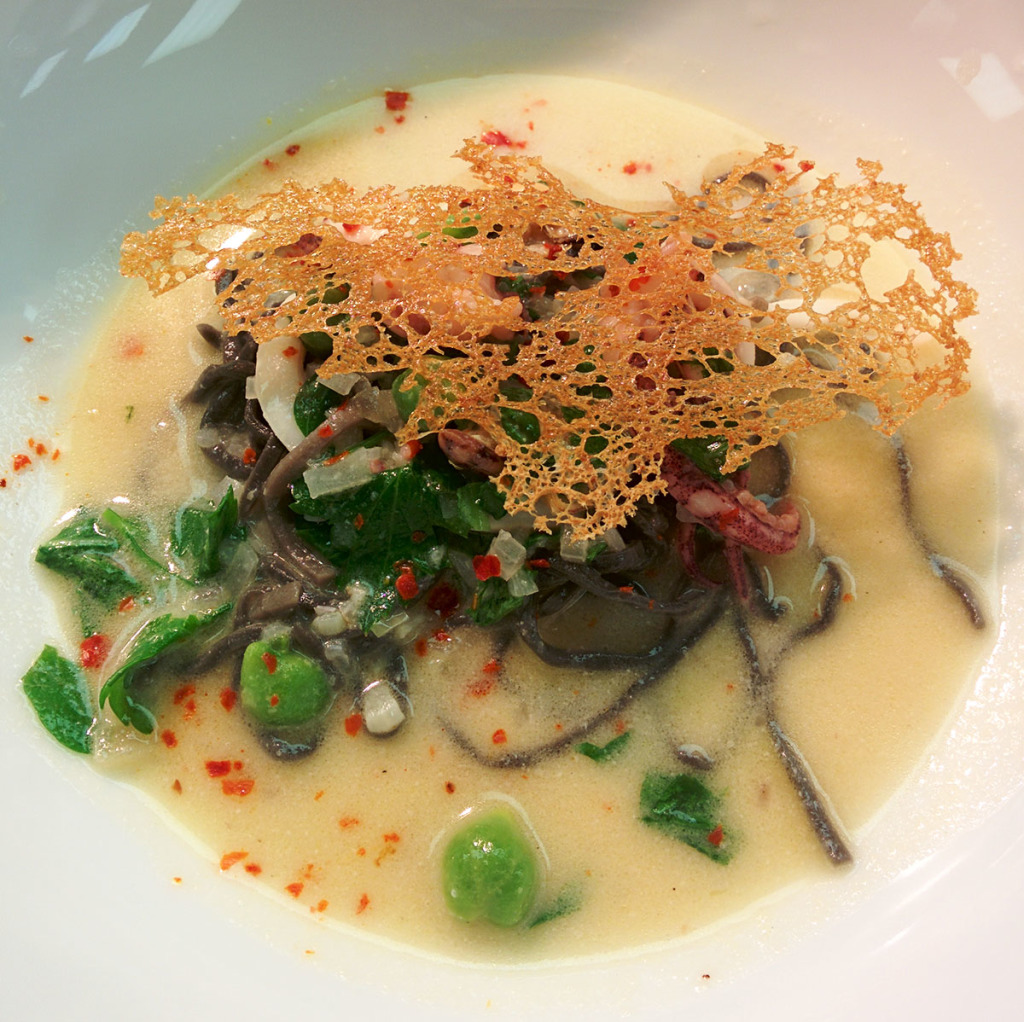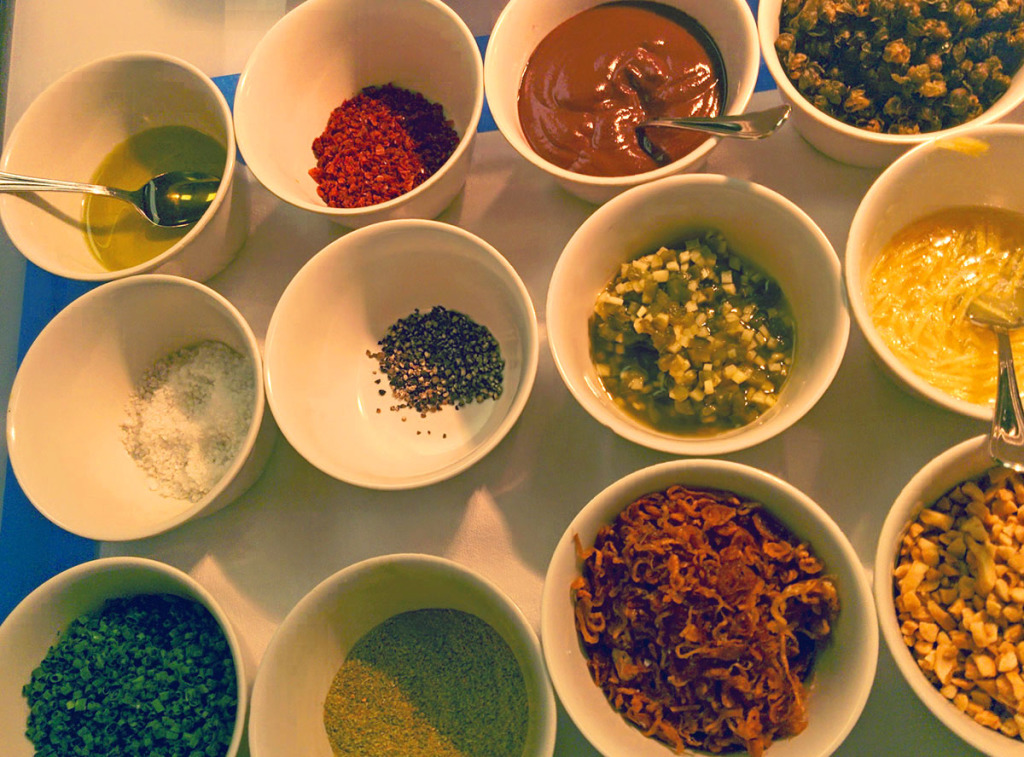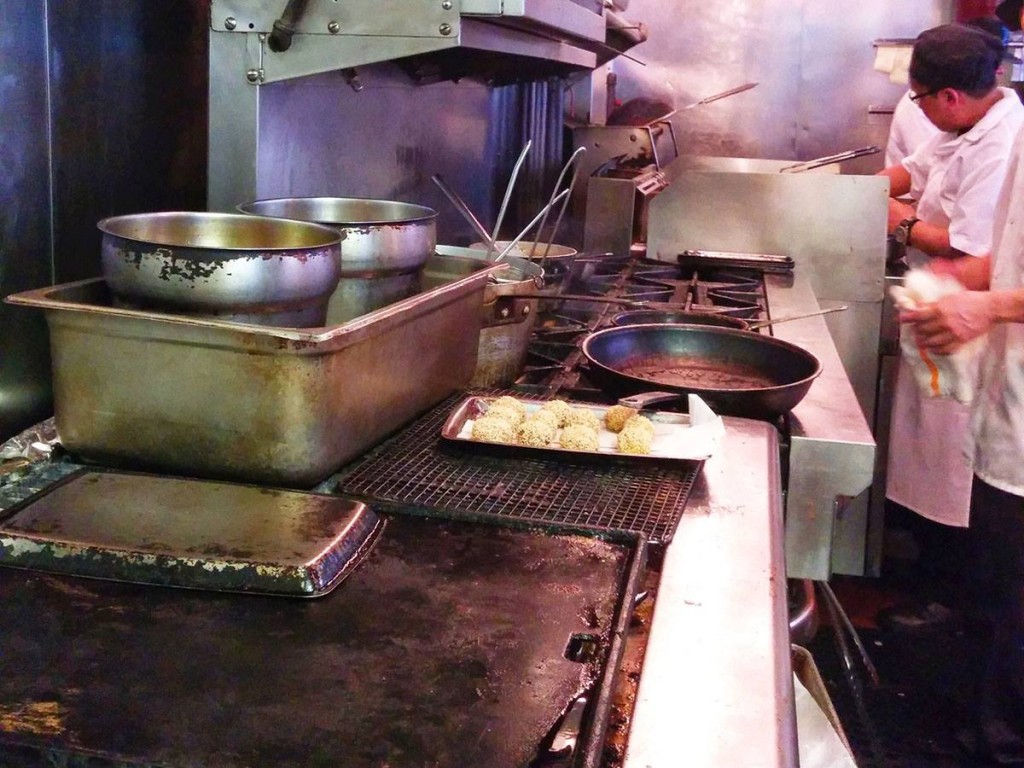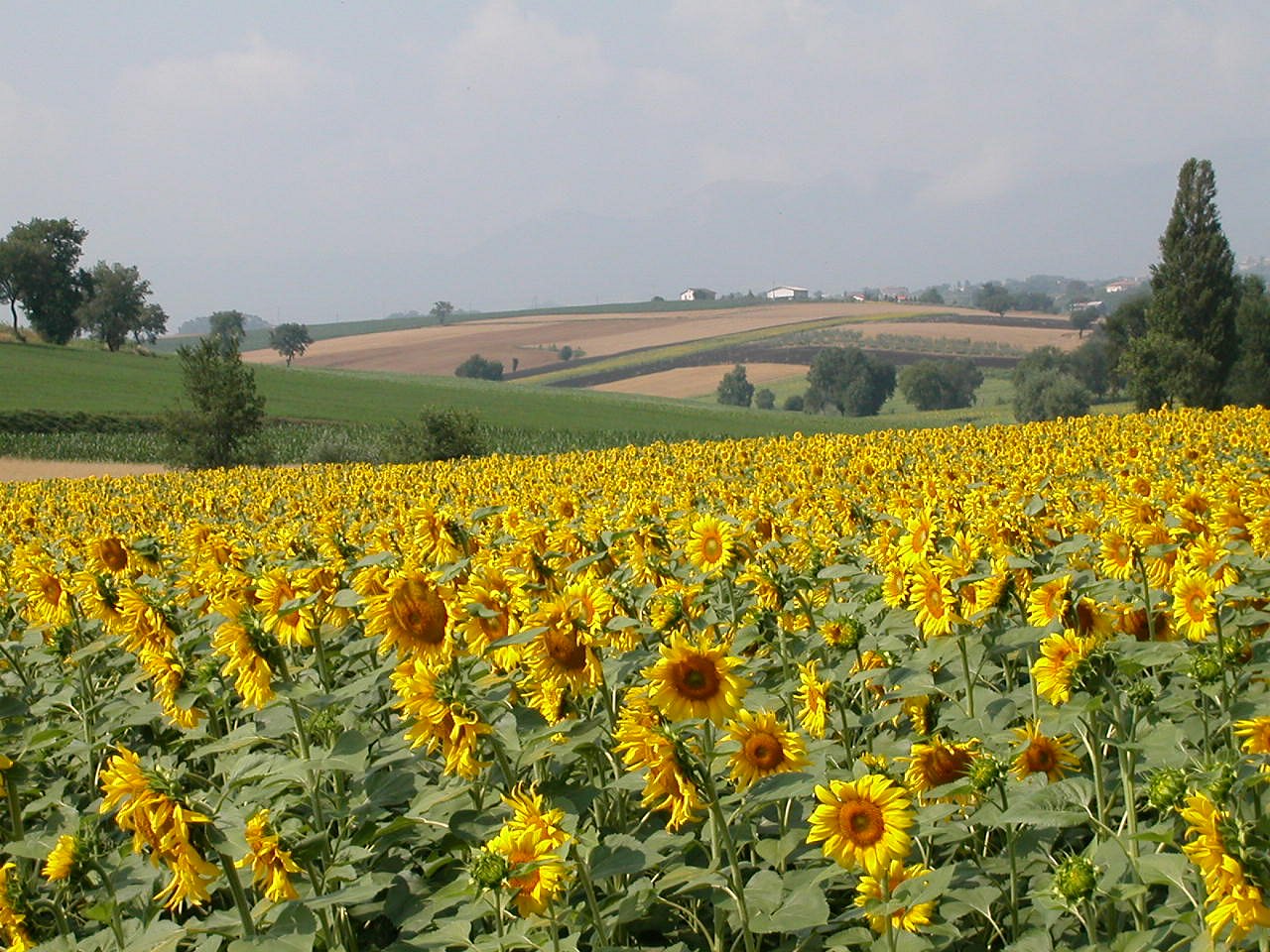
Squid ink spaghetti, grilled calamari, sesame, fresh green chickpeas (!), crisp, mussel broth, pepper flakes
“Fire four halibut.”
“Four halibut!”
A warm evening in May, and flowers were blooming inside the wood accented dining room of Gramercy Tavern. It was early for dinner, but students were already gathering with their families, a parade of graduation gowns mingling with power suits and little black dresses.
You know how sometimes things that seem totally unattainable become magically available when you just ask? I hadn’t even considered trailing at a restaurant the caliber of Gramercy Tavern, until a friend mentioned that he was pretty sure they would accept an intern, and he could put in a good word for me and find out. Sure enough, just a few days later, I was stepping through the swinging doors at one of New York’s classic arbiters for fine dining and good taste.
After signing a legal waiver and slipping into a jacket, I made my way upstairs to the pre-service staff meeting. Chef Michael Anthony was introducing Sean Barrett, founder of Dock to Dish, a cooperative of fishermen based in Montauk who distribute to restaurants and consumers. Dock to Dish supplies their catch to Gramercy Tavern, and Barrett was in house today to talk about his story and business model.
“I started fishing out of Montauk, and grew up on same day seafood,” Barrett said. “I wanted to make this available for a larger community, and I thought, how can we can catch locally and get it to the community? So, we founded a community supported fishery, and as a member, you’re entitled to whatever comes to the dock that day. We’re able to get you the top of the catch, and we subscribe to an ecosystem-based management approach. We use spear guns and rod & reel methods, but there’s no halos around any one method. Sometimes we use small boats, but we use larger boats in tough weather.
“I’ve always known Gramercy Tavern would be a perfect fit for us, with its focus on local sourcing and letting ingredients drive the menu, and I had Chef Mike on the top of my list. It’s no easy feat for a restaurant to receive whole fish, but the trade off is that you’re getting extraordinarily fresh seafood. That is definitely something we’re proud of. We’re thrilled to be working with Gramercy Tavern and Le Bernardin, and we’re a natural fit for them philosophically. Today, we’re partners with 10 restaurants and 100 community members. How do we keep this going for the next five years? By doing exactly what you’re doing, and demanding full traceability.”
There was a round of applause and a series of quick questions. “Ok guys, I’m sorry but we’re out of time,” said Chef Michael. “Write down your questions and I’ll pass them on to Sean!”

“Hi, I’m Duncan, the pm sous chef. Welcome to Gramercy Tavern.” He motioned for me to stand at the end of the pass. “Be careful where you stop, this is a good spot to hang out and observe the action.” I was hovering near a big tray of garnishes, sauces and other finishing touches. Sea salt, chives…was that chocolate sauce? Nope, olive paste.
Chef Duncan would be the dominant voice heard for that night’s call and response church service.
“Fire entrees. Flounder, black bass, cooked through.”
“Flounder, bass!”
“Can I get a spring salad and soup now? Allergies to peanut, soy, corn.”
I raised my eyebrows at this. Perez, the expeditor, whispered, “You ain’t seen nothing yet.” He’d been on expo for 17 years. “Back when I started, I was 40 lbs lighter, and I was handsome too!” he cracked. His job as expeditor was to monitor the flow and pacing of the courses that went out, working in parallel with the sous chef. Here beneath the bright, height-adjustable heat lamps reigned Perez in his home territory. Armed with a black Sharpie, he marked each ticket with its table number and times to indicate when a course was sent out, to ensure there wasn’t too long of a gap between dishes. Before each plate left the pass, he would inspect it to make sure it was clean, swabbing with a rolled cloth to clean up any errant sauce drips or grease spots.
Continue reading Trailing at Gramercy Tavern




